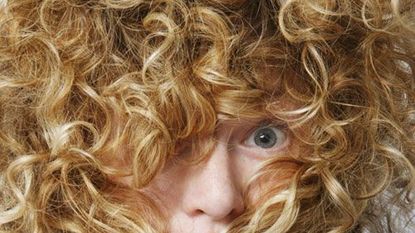
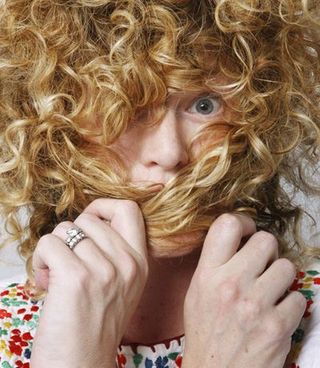
THE BIG BOUNCE
By Caroline Smith
IN COLLEGE, I was known for my Astropuffs — clouds of bouncing curls that sprouted from my signature pigtails. A friend coined the term during freshman year and it stuck. To this day, the first thing people notice about me are my curls, and I love them. But I haven't always felt this way.
As a teenager, I was determined to coax my hair into whatever trendy style of the time: the flippy, feathered mullet; the sky-high shellacked bangs (mine, awkwardly punctuated with a spray of ringlets); a boy-short pixie that led to an episode where I was mistaken for "sir." I longed for sleek strands to my waist or a pristine Louise Brooks bob, anything architectural. I even tried smoothing it with the harsh lye straightener made for African-American hair.
But when I left high school, I finally changed my mentality: I no longer wanted to fit in; I wanted to stand out. I realized that straight hair didn't match my face or my personality. Curly hair felt quirky, eccentric, bohemian — all things I embodied.
By the time I moved to New York for my first job in 2001, my confidence had flourished. I admired the few actresses brave enough to let their spirals loose — Meg Ryan, Keri Russell — and vowed never to give mine up. Still, at times, especially at work, my curls have been a hindrance. I'm in a perpetual state of bed head and often don't feel polished.
Styling my hair is a true science: I've learned that most tools — blowdryers, brushes, combs — aren't for me. Don't even get me started on diffusers — they make my hair crunchy, big, awful. I rely on my hands instead. I shampoo my hair twice a week, tops. But every day I wet and condition, towel dry, scrunch, apply cream styler, and leave it. When it's precisely half dry, I add pequi oil and I'm out the door.
Stay In The Know
Marie Claire email subscribers get intel on fashion and beauty trends, hot-off-the-press celebrity news, and more. Sign up here.
I have yet to meet a hairdresser who can get this right. Whenever I go to the salon, I pack an elastic and pull my hair into a pony as soon as I leave.
I admit I use my curls as armor. I feel exposed without them. The whole tousled thing makes me feel sexy, and my husband adores it. When we had kids, I desperately wanted them to have curls, too. My older daughter, Beatrice, has stick-straight (and beautiful) hair like her dad's. The younger, Vivian, is sporting a rather unfortunate combo at the moment: curly in back, straight in front. Maybe she'll grow out of it. Or if not, hopefully, like me, she'll learn to love it.

FLATLINING
By Katie L. Connor
No one ever believes that my hair is curly. Actually, it's somewhere between wavy and curly with an all-around poofy finish. It's as noncommittal to any style as, well, George Clooney is to any one woman. So for a long time I worked hard, roughly an hour a day, to keep up the charade of sleek hair. I never put my flatiron in my checked baggage — a case of lost luggage might blow my cover. Even my boyfriend was shocked to discover my Mufasa mane on an eco-friendly (read: no electricity) vacation to Tulum, Mexico. "If you still love me after this, then it's serious," I told him in earnest.
For years I resisted chemical straightening. The truth was, I didn't despise my ambiguous curls. They were cute back when they were of the spit variety. But by the time I was in first grade, my dad joked, "You look like Medusa!" It was a comparison I'd declare every time I let my locks dry wild at the beach. To achieve "presentable" results, I needed at least an hour with a diffuser and preferably an extra set of hands. After years of relying on ponytails (middle school), hot rollers (high school), and a fat-barreled curling iron (college), I asked my parents for a pricey CHI ceramic flatiron for my 21st birthday. The results were perfect. I never looked back.
But thanks to this year's unpredictable weather, too many good hair days turned wretched at the first step outside. I decided it was time for the next chapter in my life's hairstory.
At Serge Normant at John Frieda in Manhattan, I showed stylist Ty a picture of me looking like a dead ringer for mop-topped Jim Morrison circa 1966. Ty suggested the medium strength of the salon's new formaldehyde-free frizz-fighting treatment (say that three times fast). For the next three days I couldn't wash my hair or even pull it back in a clip for fear of a crease. Then the moment of truth: the first shower. After, my hair dried into a relaxed, manageable wave. (My bangs, however, still rebellious, required the flatiron.) My new "natural" has freed me from the drudgery of my morning routine, though it's not perfectly polished. So, like my wardrobe, I settle for two looks: straightened for work, loose and undone for the weekend. Oh, dear sweet flatiron, I guess I'll never quit you.
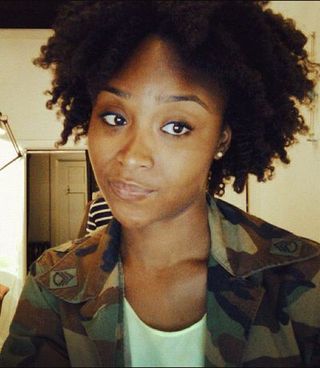
WORKING OUT THE KINKS
By Lauren N. Williams
It was pouring rain on a miserable summer morning, and I could barely muster up the energy to peel myself out of bed, let alone wrestle with my hair. Every day I pressed my naturally kinky pixie cut with a flatiron, regardless of the forecast. Though I'd had the help of a chemical relaxer to straighten my coarse curls, I still felt the need to fry my hair into submission.
My hair epiphany: All of this prep in the middle of a monsoon felt, in a word, absurd. I knew the minute I stepped outside that the humidity alone would have its way with me. I glared at the mirror and wondered, Would it really be that bad to ditch all this maintenance? Fed up with my exhausting regimen, I made the decision to divorce my relaxer and, for the first time since I was 10, go au naturel.
As a child, I believed that straight hair was more beautiful and kempt. Black women with nappy hair weren't represented positively in the media, and most of my family and friends used relaxers like a rite of passage.
The first step of my transition was to stop getting a chemical touch-up every month. After four weeks passed, as my hair began to show a striking difference between the newly grown curly locks and the straight ends (kind of like dark roots on a blonde), I stopped fearing the elements and even began exercising, no longer worried about mussing up my style. I felt so liberated by the new look that one day, armed with shears, a Beyoncé album, and my best friend, I chopped off the remaining four inches of my permed ends. What was left was a baby-soft mini Afro, uncompromised by processed hair. I wanted to celebrate over cocktails, so I put on my highest heels, whipped my new head of hair around, and embraced a new me.
Sure, I had doubts. But despite my worries, everyone raved about my hair. The feedback was so overwhelmingly positive that it made me question why I'd had such a hard time embracing it in the first place. I had to challenge my own ideas of beauty before I could accept a new standard for myself.
Watching my hair change over the past year has been an exercise in self-love. Mustering up the courage to let my natural hair grow out is honestly one of the bravest things I've ever done, and I'm happy I stuck with it. Bring on the monsoons.
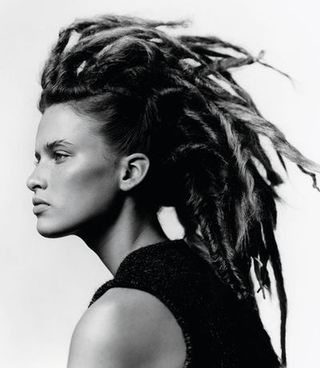
A NEW TWIST
By Margeaux Rawson
My parents were horrified when, as a teenager, I told them I wanted to chop off my luxurious, shoulder-length chemically straightened hair and start growing dreadlocks. I would be graduating from high school in a few months, and they couldn't stand the thought of me, their firstborn, receiving my diploma from one of Maryland's most prestigious private schools with "nappy little dreads." They implored me to wait until after the commencement ceremony to do whatever I wanted with my hair. But I was impatient, rebellious, and totally obsessed with Lisa Bonet, Bob Marley, A Tribe Called Quest, and early Spike Lee movies. Coming of age during the pro-black arts movement of the late 1980s and '90s, I was eager to rage against the machine by making a bold statement with my appearance. So, shortly after my 18th birthday and just weeks before my graduation, I made an appointment at Africentrics, a natural hair salon in downtown Baltimore, and walked out with a head full of baby locks — freshly back-combed and twisted with beeswax — that were barely three inches apiece. My parents were aghast.
Nearly two decades later, at age 36, I'm still rocking my locks, which now hang down to my waist. As a New York-based entertainment journalist turned music exec, having locks has never been a problem in my career — I work in an industry that glorifies fashion and personal style. If anything, they're the centerpiece of my signature look and broadcast to others that I have a strong point of view.
As my look has evolved from granola to glam over the years, from time to time I've been pinched by the desire to try something new with my hair. But, afraid that I'd instantly regret it, I've never been able to go through with the painstaking process of having my locks combed out — a process that can take up to two weeks and cost a total of roughly $2,000. For me, my locks represent a commitment I made to myself to embrace my natural beauty and live not in fear of judgment from others. I take great pride in them.
Having locks has also made me lazy and cheap in the maintenance department. In fact, I haven't owned a comb, brush, curling iron, or flatiron in 18 years. Once a week, I wash my hair, let it air-dry for a few hours, and then twist the roots with Carol's Daughter Loc Butter or Jane Carter Solution Twist & Lock before going to bed. After that, I tie my silk Roberto Cavalli zebra-print scarf around my head like a bandana and let my hair continue to dry overnight.
The only drawback? The physical weight of my long locks. They pull at my scalp, put a strain on my neck, and make swimming — my favorite sport — a challenge. So once every two years, I visit a natural hair salon in Brooklyn called Khamit Kinks and get five or seven inches trimmed. I always feel a dramatic lightness afterward.
I don't see myself having locks forever, but they've been part of my entire adult life and I'm not ready to part with them just yet. Even my parents love them now, and my mom often tells me, "Your hair is so beautiful. I can't believe I ever used to think having locks would ruin your life!"
-
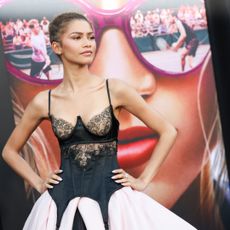 Zendaya's Method Dressing Marathon Is Over
Zendaya's Method Dressing Marathon Is OverShe found a new way to serve in custom Vera Wang.
By Halie LeSavage Published
-
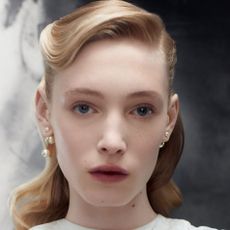 Bitten Lips Took Center Stage at Dior Fall 2024 Show
Bitten Lips Took Center Stage at Dior Fall 2024 ShowModels at the Dior Fall 2024 show paired bitten lips with bare skin, a beauty trend that will take precedence this season.
By Deena Campbell Published
-
 30 Spring Items That Solve My Expensive-Taste-on-a-Humble-Budget Dilemma
30 Spring Items That Solve My Expensive-Taste-on-a-Humble-Budget DilemmaSee every under-$300 spring item on my wish list.
By Natalie Gray Herder Published
-
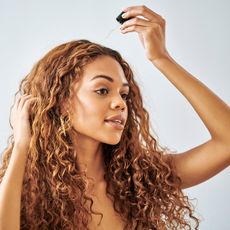 Rosemary Oil for Hair Growth: Does It Really Work?
Rosemary Oil for Hair Growth: Does It Really Work?The natural remedy went viral, but it's not a miracle worker.
By Gabrielle Ulubay Published
-
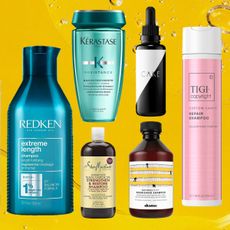 The 32 Best Hair Growth Shampoos of 2024, According to Experts
The 32 Best Hair Growth Shampoos of 2024, According to ExpertsRapunzel hair, coming right up.
By Gabrielle Ulubay Published
-
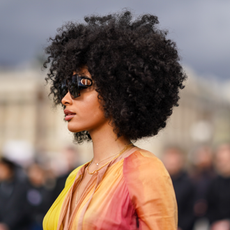 The 12 Best Deep Conditioners for Curly and Natural Hair, According to Hairstylists and Editors
The 12 Best Deep Conditioners for Curly and Natural Hair, According to Hairstylists and EditorsFight damage and frizz, rain or shine.
By Gabrielle Ulubay Last updated
-
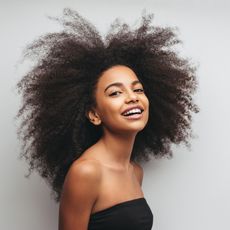 The 20 Best Hair Masks for Damaged Hair, According to Experts and Editors
The 20 Best Hair Masks for Damaged Hair, According to Experts and EditorsHealthy strands, here we come!
By Gabrielle Ulubay Last updated
-
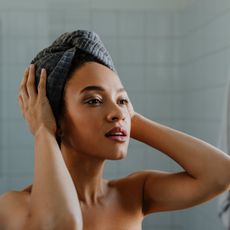 How Often You Should Wash Your Hair, According To Experts
How Often You Should Wash Your Hair, According To ExpertsKeep it fresh, my friends.
By Gabrielle Ulubay Published
-
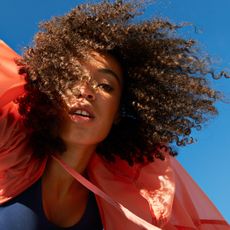 The 18 Best Natural Hair Products in 2023
The 18 Best Natural Hair Products in 2023Remember: Your curls are your crown.
By Gabrielle Ulubay Published
-
 The 9 Best Hot Rollers for the Curls of Your Dreams
The 9 Best Hot Rollers for the Curls of Your DreamsThis is how we roll.
By Samantha Holender Published
-
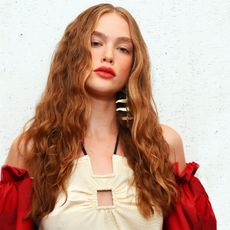 The 17 Best Sea Salt Sprays for Vacation Hair
The 17 Best Sea Salt Sprays for Vacation HairGet the beachy waves of your dreams with these fake-it-'til-you-make-it sea salt sprays.
By Gabrielle Ulubay Last updated